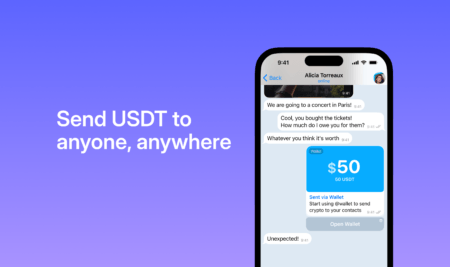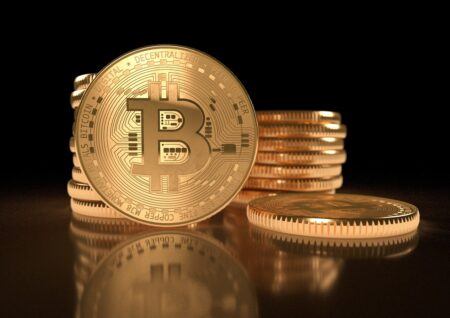On Monday (March 11th), blockchain startup Bancor unveiled its new non-custodial web-based Unified Wallet (which runs well on any desktop or mobile browser), which allows users to manage 500+ ERC20 and EOS tokens in one wallet and to perform one-click conversions between any two such tokens (across 9700+ pairs).
Here is how Bancor announced the news on Twitter:
Bancor's new Unified Wallet is officially LIVE. For the first time ever, users can perform one-click conversions between @Ethereum & $EOS tokens without giving up possession of their #crypto. https://t.co/7nBGDN9IRE pic.twitter.com/L7YdYMGQaC
— Bancor (@Bancor) March 11, 2019
What Bancor has done with this release is taken a big step towards a future “where wallets function seamlessly between dApps on different blockchains, just as browsers allow for seamless surfing between websites,” and it marks “the next step in Bancor becoming a blockchain-agnostic network, and abstracting away the blockchain experience in favor of frictionless token conversions and management.”
Originally, the Bancor Network for decentralized liquidity was based on the Bancor Protocol, “which leverages the capabilities of smart contracts to build liquidity directly into tokens themselves.” The idea was that these Smart Tokens would “always available to be both bought and sold directly through their smart contracts” at “prices that programmatically adjust to reflect supply and demand.” This means that “the token’s governing software” would always offer “to sell tokens to buyers and buy back tokens from sellers.” These smart tokens were ERC20-compatible tokens.
On 20 September 2018, Bancor announced the BancorX Protocol, which was “the expansion of the Bancor Protocol to EOS.” This meant that the Bancor network would soon be able to support both the Ethereum and EOS blockchains, thereby allowing any ERC20-based token listed on Bancor to be “instantly convertible” to any EOS-based token listed on Bancor. Everipedia (IQ), Lumeos (LUME), and KARMA (KARMA) were some of the first EOS-based tokens to go live on BancorX.
Then, on 5 November 2018, BancorX went live, “enabling automated token conversions between 110+ Ethereum and EOS-based assets.” Therefore, users would be able to “convert across blockchains without having to deposit funds on an exchange, and without having to find a matching order from a buyer or seller.” Bancor’s blog post said that anyone could “integrate an EOS or ERC20 token with BancorX by staking an amount of those tokens in a smart contract which they own and manage.” We also got to find out the role of the Bancor Network Token (BNT) in the BancorX Protocol:
“Behind the scenes, BancorX is based on the ability to move BNT — the Bancor Network Token — between blockchains. BNT is now designed to function concurrently on both EOS and Ethereum in order to enable cross-chain conversions without affecting the circulating supply of BNT. This cross-chain functionality increases the utility of BNT as an inter-network token, connecting the EOS and Ethereum ecosystems today, and vastly more blockchains in the future. BancorX was built in partnership with Bancor’s block producer team, LiquidEOS.”
“A key component of this cross-chain functionality is the unique ability of BNT, the world’s first Smart Token, to automatically issue and destroy itself simultaneously on multiple blockchains. Any BNT that moves between chains is removed from circulation on the originating chain and sent to an address on the destination chain. This ensures that throughout the cross-chain conversion process, the circulating supply of BNT remains unchanged.”
The Bancor Team also published another blog post that day that gave full details of what exactly happens behind-the-scenes when “a user converts an Ethereum-based token into an EOS-based token via BancorX” or vice versa.
Now, coming back to yesterday’s announcement, here are a few things worth pointing out about Bancor’s new crypto wallet:
- It is built on top of the BancorX Protocol (described above).
- Users “receive a free EOS account, enough EOS resources (RAM, CPU & NET) to get started, and manage EOS resources directly” from their wallet.
- Users can “receive any airdropped ERC20 or EOS token” directly to their wallet.
- Since this is a non-custodial wallet, users can keep “funds safe by having full control over the private key.”
- It is possible to access dApps without leaving the wallet interface.
- Bancor does not charge any fees for “transfers in and out of the wallet or for its built-in token conversions, which occur instantly and are processed fully on-chain, ensuring faster, cheaper and more predictable conversions.”
- Existing Bancor users “who opened a Bancor Wallet prior to March 11, 2019 will need to upgrade their wallet in order to access EOS token, and cross-chain conversions between ERC20 and EOS tokens” as explained by one of the helpful guides in Bancor’s FAQ library.
- New Bancor users “can sign up via SMS, Telegram or FB Messenger and easily import their ERC20 and EOS tokens into the wallet.”
One final interesting point about the BancorX Protocol is that it is used by the Enjin crypto wallet (the Enjin team has a partnership with Samsung for the use of their wallet in the newly-launched Galaxy S10 smartphone) for implementing some of its in-app token/coin swap functionality:
Congratulations to our friends @enjin for officially confirming their partnership with @Samsung! We are thrilled to be part of this integration and excited for the road ahead. 🚀 https://t.co/NOWLQ8trCV $BNT $ENJ pic.twitter.com/qnFJTY0dpA
— Bancor (@Bancor) March 9, 2019
Featured Image Courtesy of Bancor









